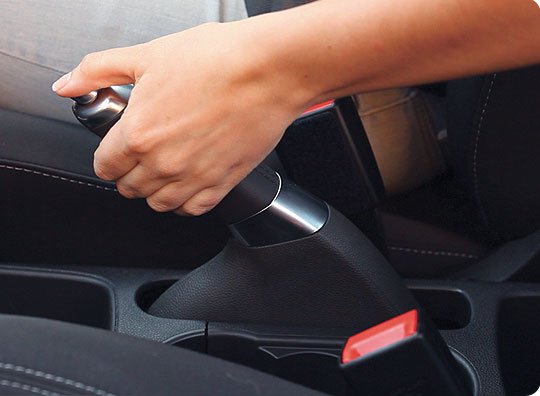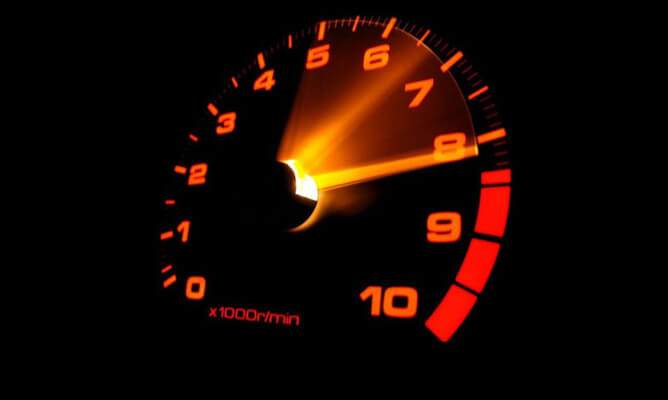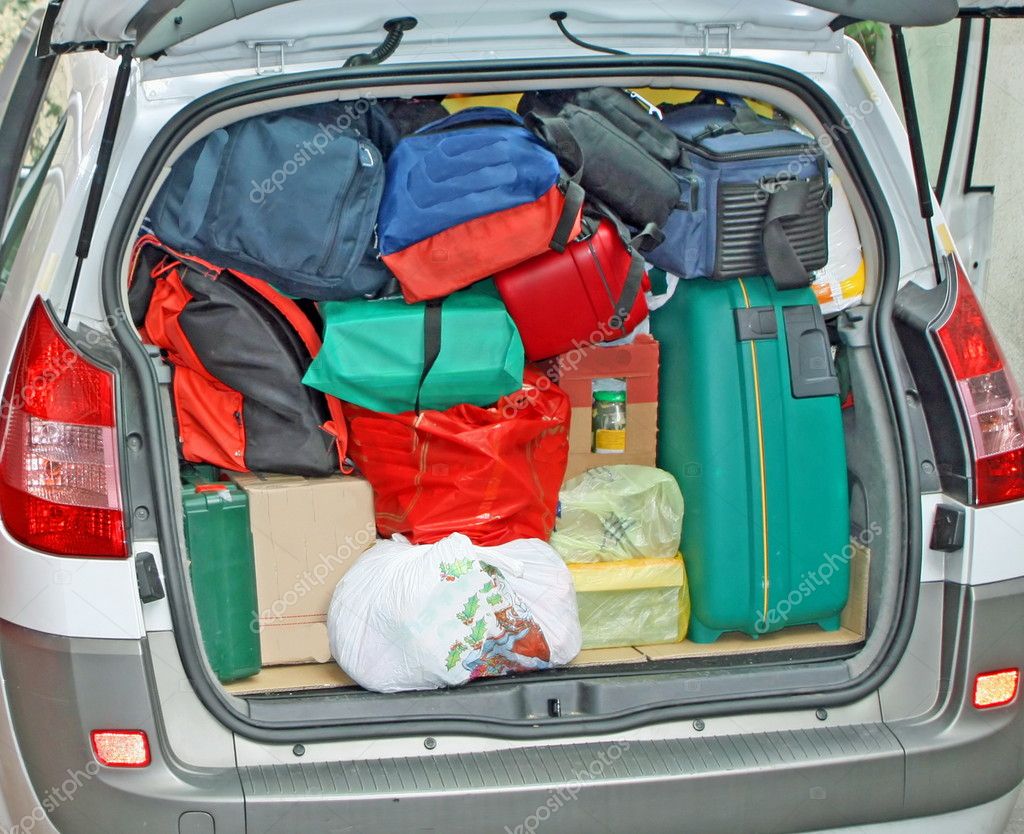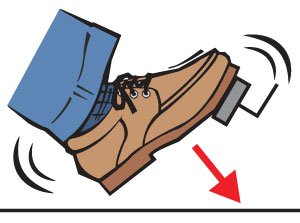10 Bad Habits That Damage Your Car
Ignoring the Parking Brake
Ignoring the Parking Brake

Even if you're parked on a level surface, there's really no reason not to use the parking brake. Not engaging the parking brake puts the entire weight of your vehicle on a little piece of metal in the transmission called the parking pawl. It's only about as big as your finger, so it can wear out or break eventually from holding all that weight. Using the parking brake evens the load, helping delicate transmission components last longer.
Keeping the Fuel Tank Low
Lots of us have been in a situation where putting £10 in the fuel tank is the best we can do at the time. What you might not know is that ponying up a little extra could help to prevent damaging a car's fuel system. Many fuel pumps keep cool by staying submerged in the fuel in the tank, so if you're regularly running at a quarter full or less, you risk speeding up the need for a fuel pump replacement. Paying a little more at the gas station might sting, but it won't hurt nearly as much as needing a new fuel pump.
Suddenly Shifting From Reverse to Drive

Picture this: you're backing out of a parking space. The coast is clear, so you flick the shifter and start moving forward. Sound familiar? This might not seem so bad in the moment, but over time sudden direction changes like this can really damage your drivetrain. Instead, come to a complete stop before switching. It only adds a second of time and will save you from future engine, transmission, or axle damage.
Revving Before the Engine Is Warm

Letting your car sit for a minute or two right after it starts is a good idea. It helps distribute oil throughout the engine and get the engine block and engine oil up to temperature. Revving the engine won't speed up the process. In fact, that could cause easily avoided damage. Cold revving causes abrupt temperature changes that create stress between the engine's tight-fitting components. Simply give it 60 seconds before you get on the road, and everything will have warmed up for reliable performance.
Flooring It When You Don't Need To

Every car enthusiast feels the temptation for a full-throttle blast every once in a while. A problem with that is that you usually need to mash on the brakes to slow back down. Neither is good for your car. Hard acceleration burns a ton of fuel (ok, maybe not for a Tesla) and places heavy load on drivetrain components. Full-force stops cause rapid wear to the brake pads and rotors. Resist the urge to drive like this. If you can't, know that repair bills will arrive sooner than later.
Using the Shifter as a Hand Rest

Driving a manual transmission car can be great fun, and when you're rowing through the gears, it feels natural to leave one hand on the steering wheel and the other on the shift lever. Don't. Leaving your hand on the shifter causes puts strain on the transmission's bushings and synchronizers, leading to premature wear. It's best to keep both hands on the wheel anyway. You'll help your transmission, and be able to take control if you need to make a sudden steering maneuver.
Abusing the Clutch

Lots of manual-gearbox drivers do this one. When you're at a stop, you keep the clutch pushed to the floor. That way you can inch forward as traffic moves, or be ready to take off when the light turns green. However, keeping the clutch in when you're stopped causes its surfaces to scrape against each other, wearing them out and creating the possibility of failure. It also can cause damage to the release bearing, release arm, and pressure plate. Instead of riding the clutch with the shifter in gear, find Neutral with the shifter and let the clutch out. When it's time to go, put the clutch in, grab first, and drive.
Carrying Too Much Weight

The more a car weighs, the more stress it places on its drivetrain, suspension, and brakes, and the more fuel it consumes – it's as simple as that. Do what you can to keep your car as light as possible. We're not suggesting ripping out the air conditioning or sound system, but clean out any unnecessary junk. While a few pounds of weight removed might only give you an extra mile on a tank of gas, it can really make a difference in the long run. Make sure your car is stocked with the essentials you need on a daily basis and store the rest somewhere else.
Riding the Brakes Downhill

Sometimes you've got to brake when going downhill to keep from going way too fast. But this causes heat to build up in the brake pads and rotors, causing wear and increasing the risk that they will overheat or warp. As a solution, try shifting into a lower gear. The natural decompression that occurs in the drivetrain will help keep the car at a safe speed. That way, if you do need to hit the brakes, you'll find they're more effective.
Neglecting Warning Signs

When something's going wrong with your car, chances are it will try to tell you. Any strange vibrations, intermittent squeaks, occasional knocks, or other unusual symptoms should be inspected right away. You might not feel any problems but the longer you wait, the more trouble you could be in if a part suddenly fails and you're left stranded on the side of the road.
How to drive safely in heavy rain
Six quick tips so you can handle any storm—whether a light drizzle or a torrential downpour.
1) Check your tyres
Car tyres have treads, the pattern of grooves and channels along their circumference. The tread works to create grip on the road by channeling water, mud, and debris away from the contact patch. With use, the tread wears down and becomes much more likely to slip or spin on wet surfaces.
If you're not sure your tread is deep enough to stay safe, use the penny test to check. Get a penny and insert it in the tread (20p test in UK) with Lincoln's head pointed at the centre of the wheel. If you can't see his hair (20p outer band), your tyres are good. If you can see the top of his head, it's time for new tyres.
2) Inspect your windshield wipers
Without windshield wipers, wet weather driving would be like swimming without goggles. Rubber wiper blades collect grime and wear out, leading to streaks or inconsistent wet patches on the windshield.
You can clean them by rubbing the blade with rubbing alcohol, but if you notice any cracks or chunks missing, it's time to buy a new set. The motor and linkage that actually move the wipers can wear out, too, so if yours aren't working properly, get them inspected to see what's broken.
3) Turn on your headlights
Given how significantly rain can impact visibility, do everything you can to make yourself easy to see to other drivers. Driving a bright green exotic is one option, but there's a far simpler solution – just turn on your headlights.
It's the least you can do to make yourself noticeable, and may be legally required in your state. Repeat this rainy weather mantra: wipers on, headlights on.
4) Avoid hydroplaning (aquaplaning)
There's a misconception that driving through a puddle quickly is safest because you'll get through it faster, but the inverse is actually true. If you're moving fast enough, your tyres will skim over the surface of the water, causing you to hydroplane and potentially lose control of your vehicle.
If you start to hydroplane, keep both hands on the steering wheel and gradually apply the brakes. Slamming on the brakes or jerking the wheel can cause a skid. The best way to avoid this situation altogether is to look far down the road and reduce speed when you approach a puddle.
5) Never use cruise control
Cruise control is helpful when roads are dry, but can be a problem when it's raining. Cruise control works to maintain a constant speed, so it greatly increases the chances of hydroplaning since it's not smart enough to detect when there's water on the road. Keep your car under full manual control any time you drive in the rain.
6) Slow way down
Wet roads can be slick and treacherous, increasing stopping distances and the potential for a skid. Give yourself more time to react by driving 5 to 10mph below the speed limit. Keep right, pass safely, always check your mirrors, and leave several car lengths between you and the driver ahead.
It might seem like common sense, but anything you can do to be a slower, more attentive, more courteous driver makes rainy weather safer for all drivers. Rain forces drivers to adjust to a unfamiliar driving technique. Taking extra precautions and simple adjustments shouldn't make your drive much longer and your car and more importantly, you, will arrive at your destination in one piece.